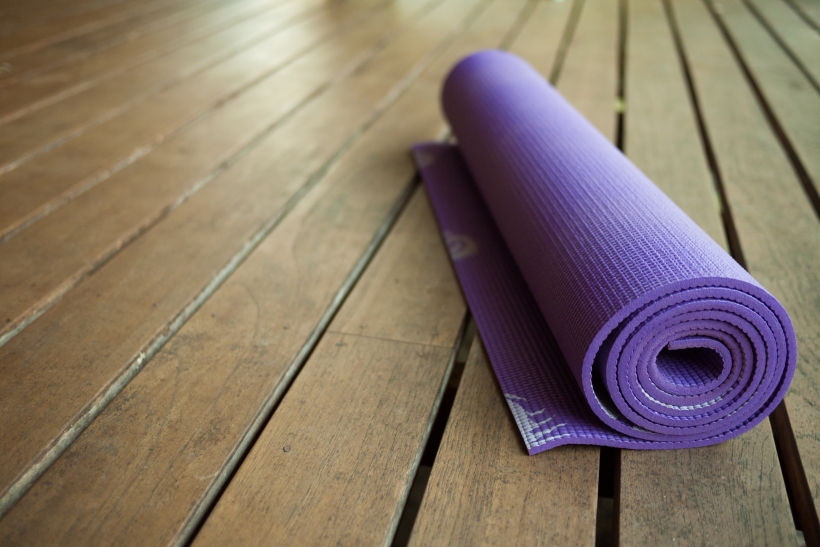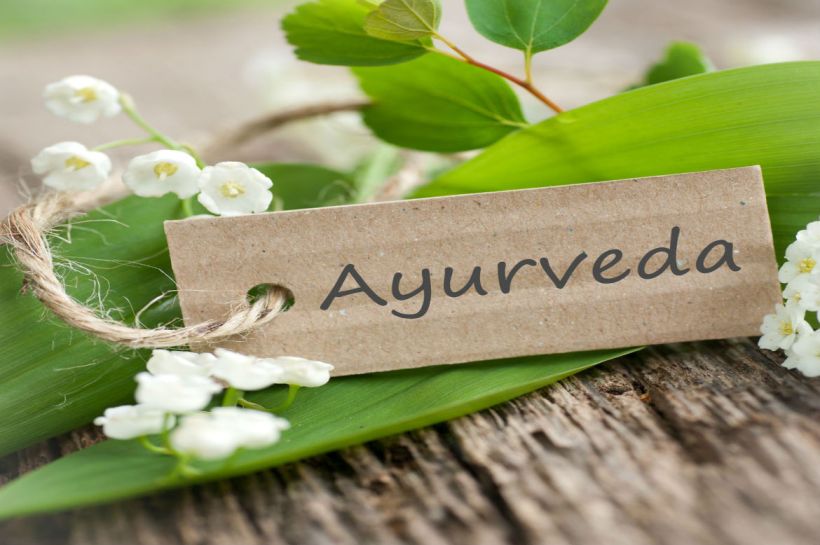 What follows is a brief description of a traditional Ayurvedic morning routine. Remember, this is the ideal. As you read through this list, pay close attention to which elements stir the deepest response in your body. Those practices will usually be the best ones to start with. This is from a favorite Ayurvedic website/online store of mine, Banyan Botanicals.
What follows is a brief description of a traditional Ayurvedic morning routine. Remember, this is the ideal. As you read through this list, pay close attention to which elements stir the deepest response in your body. Those practices will usually be the best ones to start with. This is from a favorite Ayurvedic website/online store of mine, Banyan Botanicals.
- Wake Up Between 3am and 6am
The classics recommend that we rise during the “ambrosial hours” of the morning, sometime between 3am and 6am. This is a Vata time of day: the atmosphere is infused with lightness and clarity, which helps us to more easily awaken. Equally important, this time of day is regarded as being the most conducive for creating a connection with our deepest inner nature and consciousness. Waking during this particular timeframe is not necessary for children, the elderly, or for those who are sick, pregnant, or breast-feeding. Regardless of what time works best for you, your daily routine will be most beneficial if you wake up at a consistent time from one day to the next.
- Eliminate
Empty the bladder and the bowels. Ayurveda views morning elimination as a natural and essential element of daily hygiene and health. If you do not typically have a bowel movement first thing in the morning, some of the below practices (like drinking warm water) may help you regulate this function in your body. Or, consider taking triphala to support healthy and regular elimination.
- Scrape Tongue
This simple hygiene practice removes bacteria and toxins that have accumulated on the tongue overnight. It also serves to stimulate and cleanse the digestive tract and the vital organs. So while tongue scraping is considered an important element of daily oral hygiene, it also supports the natural detoxification of the system at large. Another benefit of scraping the tongue is that it allows us to take notice of the coating on our tongues each morning and to begin to see how our dietary choices and lifestyle habits influence our overall health from one day to the next. A tongue cleaner made of stainless steel is balancing for all doshas. When you are finished, rinse with clean water and spit.
- Brush Teeth
While this practice is already familiar to all of us, Ayurveda recommends cleaning the teeth with herbs that promote oral health – like neem – which are typically bitter, astringent, or pungent in taste.
- Drink Warm Water
Drinking a glass of warm water cleanses and awakens the digestive tract, hydrates the tissues, and promotes peristalsis – which can encourage a bowel movement, even when there is a tendency toward sluggishness or constipation. It is best to drink water only after the mouth and the tongue have been cleansed so as not to swallow the bacteria and toxins that have accumulated in the mouth overnight.
- Swish & Gargle with Pulling Oil
It is said that swishing and gargling with warm oil lends strength to the teeth, gums, jaw, and voice, while improving the sense of taste. Spit the oil out after you have held and swished it in your mouth for the desired period of time. This practice can be done briefly, for 1-2 minutes, or for as long as 15 minutes. If a longer swish and gargle is appealing, consider doing it during abhyanga (see below), or while completing other aspects of your morning routine.
- Massage Gums with Pulling Oil
Use your clean index finger to gently massage a bit of oil into your gums. This practice further benefits the teeth and gums by increasing circulation in these tissues and encouraging absorption of the oil.
- Splash Cold Water in the Eyes
Our eyes work very hard all day and they tend to accumulate a lot of heat. Splashing a bit of cold water into each eye in the morning helps to cool, sooth, and relax the eyes, but also helps us to feel more vibrantly awake.
- Meditation, Pranayama, Prayer, or Quiet Reflection
If the central purpose of a morning routine is to calm the nervous system and ground the being before the day begins, then meditation, pranayama, prayer, or quiet reflection are perhaps its most essential elements. You may already have a practice that speaks to you. If not, simply sitting quietly and breathing slowly and deeply for a few minutes can have a tremendously beneficial effect. If you’re looking for a soothing and powerful introduction to breath work, Dr. Claudia Welch’s Prana CD consists of four guided breathing exercises that can be practiced in sequence or individually.
- Movement
Making time to move our bodies in an appropriate way in the morning is both grounding and energizing. It supports natural detoxification by promoting healthy circulation and by helping to move stagnation from the organs and tissues. It also helps to loosen and awaken the body and the joints. Early morning is a very supportive time for almost anyone to exercise because of the strengthening and stabilizing influence of kapha, (which is prevalent in the atmosphere from about 6am-10am). If it is not possible for you to exercise in the early morning, early evening is a good alternative (about 6pm – 10pm), preferably before dinner.
As a sister science of Ayurveda, yoga is a natural part of an Ayurvedic daily routine. However, different individuals will benefit from different types of yoga, depending on their constitution and current state of balance. For pitta-kapha types, a more invigorating form of yoga – such askapha-pacifying yoga – practiced with relaxed effort (rather than strained intensity) is usually most appropriate. Including several twists, forward folds, and a sufficient time in shavasana will also help to balance pitta.
Ayurveda recommends different types and intensities of exercise for different constitutions and imbalances. In general, Ayurveda suggests that we exercise to only about 50% of our capacity – until we break a mild sweat on the forehead, under the arms, and along the spine, or until the first sign of dryness in the mouth. For pitta-kapha types, the ideal exercise program is typically active and challenging but should also serve to relax and release pitta’s intensity. In other words, it is best to strive for a calm and centered state of mind throughout the activity. Appropriate forms of exercise for pitta-kapha types include swimming, jogging, biking, hiking, and martial arts.
- Abhyanga (Ayurvedic Oil Massage)
This ancient practice of self-massage with oil calms the nervous system, lubricates and rejuvenates the tissues, and promotes healthy circulation throughout the body. It is no coincidence that the Sanskrit word for oil, sneha, also means love. Abhyanga is a profound practice of rejuvenation and loving self-care that benefits both the physical body and the more subtle realms of consciousness. Each morning, before a shower or bath, massage about 1/4 cup warm Kapha Massage Oil (because kapha tends to be more aggravated by the qualities of oil massage) or Organic Sesame Oil into the skin.
- Apply Warm Oil to the Ears
The ears are closely related to vata dosha (which is easily aggravated by modern life). Lubricating the ears with warm, untoasted sesame oil regularly can help to pacify vata in general, but can also support the sense of hearing, prevent stiffness in the neck by lubricating local tissues, and encourage healthy TMJ function. You can use an eyedropper to place about 10 drops of warm sesame oil in one ear at a time – letting it sit for several minutes before draining any excess and then repeat the process on the other side. Or, you can simply use the tip of your pinky finger to lubricate the inside of each ear with a bit of sesame oil.
- Apply Warm Oil to the Top of the Head
Oiling the head and scalp is deeply soothing and can help to prevent headaches, hair loss, and greying. It also supports each of the sense organs and encourages sound sleep.
- Foot Massage
Our feet literally carry us through each day. Massaging them each morning, focusing on the soles in particular, is a very grounding and nurturing practice. But because various points on the feet correlate with organs and tissues throughout the body, it also supports proper vision, relieves stress, and offers many other systemic benefits.
- Cleanse or Lubricate the Nasal Passages
There are two Ayurvedic practices that support clean, clear nasal passages and clarity of mind. Both of these practices are best done on an empty stomach, usually early in the morning. They each have distinct energies and benefits, so if you chose to try them both, it is best to separate them by at least a day (i.e. don’t follow nasal rinse immediately with nasya or visa versa).
Nasal rinse is a practice of pouring warm salt water through the nasal passages to moisten the mucus membranes and cleanse the nasal passages of dust, dirt, pollen, and excess mucus. If you find that your nasal passages feel dry afterwards, you can use your pinky finger to lubricate the nostrils with a bit of sesame oil or ghee when you’re finished or at another time of day (i.e. as part of your bedtime routine).
Nasya is the practice of applying medicated oil to the nasal passages to soothe these delicate tissues, promote unobstructed breathing, relieve accumulated stress, and support mental clarity. This practice is also said to improve the quality of the voice and to strengthen vision. Nasya should not be performed by pregnant or menstruating women. Each morning, find a comfortable place to lie in the supine position (on your back), tilting your head upside down. You may find it helpful to hang your head off the edge of a bed or bolster, so that the top of your crown is parallel with the floor. Once in position, apply 3-5 drops of Nasya Oil into each nostril, sniffing the oil inward and massaging the face, forehead, and scalp to encourage the oil to move up into the sinuses and head. Relax for a minute or two to allow the oil to absorb before slowly getting up.
- Massage the Body with Dry Powder
Massaging the body with soft powders (like chickpea or rice flours), stimulates movement of the lymph, balances kapha, encourages circulation, liquefies fat, bolsters the health of the skin, and lends strength and tone to the tissues of the body. It can also help to remove excess oil from the skin following abhyanga.
- Bathe
Bathing is a very important part of the traditional Ayurvedic routine. It is said to cleanse and purify the body, to bring energy and alertness to the being, and to promote longevity. Use soap only where necessary. If you’ve done abhyanga, rinsing the skin with warm water will generally suffice to remove excess oil.
- Breakfast Time
Establishing a consistent time for breakfast is a great way to ensure that we have time to eat our first meal mindfully and that we start our day well nourished. The content of your breakfast should be seasonally appropriate and supportive of your unique constitution or imbalance.
Photo credit: http://www.mnn.com/
Information taken from: https://www.banyanbotanicals.com
 It’s been a struggle to say the least. I’m sure you’ve all noticed due to my sporadic writing. I’ve felt guilty and dirty and hopeless after not keeping up as well as I’d promised myself. But then my awareness got the better of me and I realized I was doing the same self-defeating patterns as before my journey began, so I stopped myself right there. I let silence fill me, and I allowed the feeling of the void to take over for a while. Kind of like in yoga. When you’re sore or not doing a particular pose well, oftentimes your teacher will tell you to “breathe through it”, “allow yourself to feel the pain”, “inhale and exhale through the discomfort”. So I did. I took days here and there to check myself and to make some changes that might make me feel motivated to return to my Yoga/Ayurveda journey. I wanted to trust that I needed some space and that in the right moment, I would return.
It’s been a struggle to say the least. I’m sure you’ve all noticed due to my sporadic writing. I’ve felt guilty and dirty and hopeless after not keeping up as well as I’d promised myself. But then my awareness got the better of me and I realized I was doing the same self-defeating patterns as before my journey began, so I stopped myself right there. I let silence fill me, and I allowed the feeling of the void to take over for a while. Kind of like in yoga. When you’re sore or not doing a particular pose well, oftentimes your teacher will tell you to “breathe through it”, “allow yourself to feel the pain”, “inhale and exhale through the discomfort”. So I did. I took days here and there to check myself and to make some changes that might make me feel motivated to return to my Yoga/Ayurveda journey. I wanted to trust that I needed some space and that in the right moment, I would return. Happy 2017! 2016 flew right by! Or is it that the years always begin to fly by once you hit 25+? Anywho, I’m excited for new beginnings. Everything feels fresh, new, and untouched. Amazing how an imaginary man-made calendar can be the catalyst for such crisp motivation.
Happy 2017! 2016 flew right by! Or is it that the years always begin to fly by once you hit 25+? Anywho, I’m excited for new beginnings. Everything feels fresh, new, and untouched. Amazing how an imaginary man-made calendar can be the catalyst for such crisp motivation.


 Hello there! Checking in/holding myself accountable/procrastinating doing any actual work/drinking some hot lemon water this morning. How are you? 🙂
Hello there! Checking in/holding myself accountable/procrastinating doing any actual work/drinking some hot lemon water this morning. How are you? 🙂 What follows is a brief description of a traditional Ayurvedic morning routine. Remember, this is the ideal. As you read through this list, pay close attention to which elements stir the deepest response in your body. Those practices will usually be the best ones to start with. This is from a favorite Ayurvedic website/online store of mine, Banyan Botanicals.
What follows is a brief description of a traditional Ayurvedic morning routine. Remember, this is the ideal. As you read through this list, pay close attention to which elements stir the deepest response in your body. Those practices will usually be the best ones to start with. This is from a favorite Ayurvedic website/online store of mine, Banyan Botanicals. This is the phrase of my dosha – my test result:
This is the phrase of my dosha – my test result:

 Matt Damon
Matt Damon This is what I keep telling myself. “Welcome to balance”. “Welcome to thriving”. “Welcome to nourishment”. “Welcome to Ayurveda”.
This is what I keep telling myself. “Welcome to balance”. “Welcome to thriving”. “Welcome to nourishment”. “Welcome to Ayurveda”.